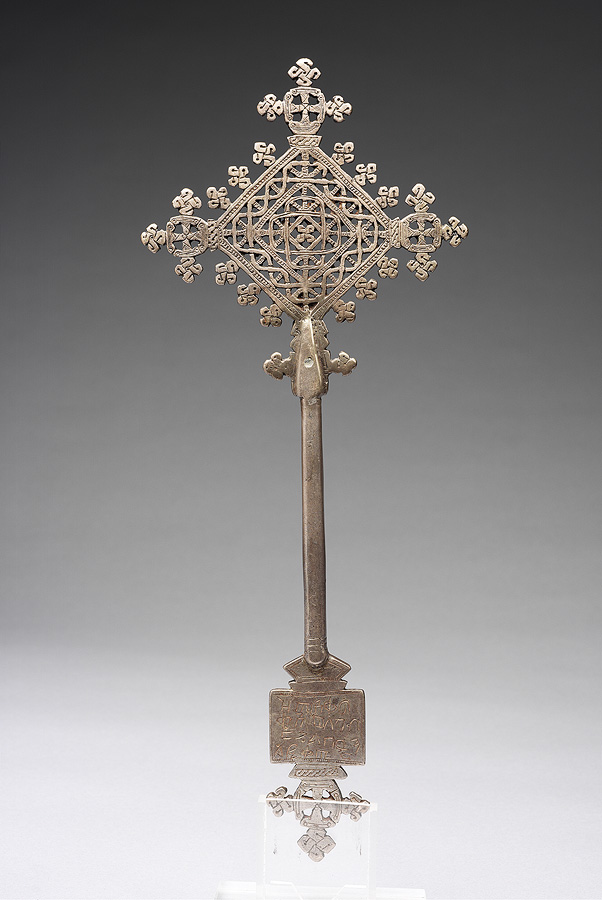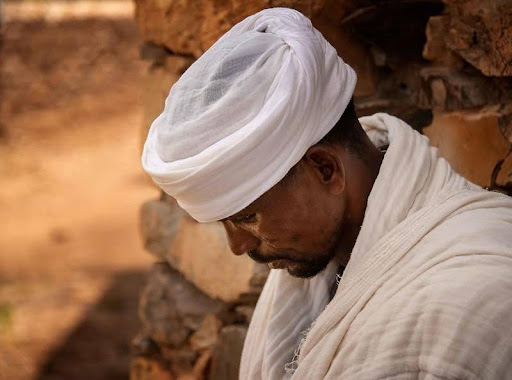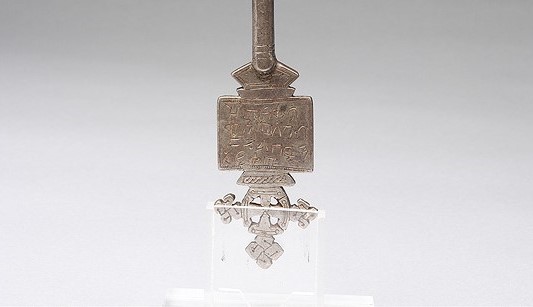
Translating an Amharic Inscription on an Ethiopian Silver Cross in the Collection
Hildana Shiferaw ‘25 is an Engineering and Biology student. She helped translate an Amharic inscription that appears at the base of an Ethiopian Silver Cross from the 19th century that is currently on view in the installation Worlds in Process on SCMA’s third floor. Here, she shares her experience translating the inscription.
Standing in front of the Ethiopian Silver Cross at SCMA, its design reminded me of liturgical objects and crosses found in the Ethiopian Orthodox Christian Churches. The Ethiopian Orthodox Church (የኢትዮጲያ ኦርቶዶክስ ተዋህዶ ቤተክርስቲያን) is one of the oldest Christian churches in the world tracing its origin back to the baptism of an Ethiopian eunuch by Apostle Philip (Acts 8:26-40). This church, with its unique and rich history and tradition, was founded at a synodal level in 328 AD and gained autocephaly in 1959. The Ethiopian Orthodox Church is known for its unique practices and monastic traditions, which remains an important part of the country’s identity and culture.

An Ethiopian Orthodox priest wears a turban-like wrap and scarf made of netela, a handwoven white fabric. Photo by Rod Waddington.
The church had also a profound effect on me personally, and as I looked closely at the cross in SCMA, memories flooded back: the white handwoven scarves, the loud spiritual recitations in the Ge'ez language, the smell of incense, and the soothing warmth of collective prayers. These sights, sounds, and scents of my youth filled me with pride. At the core of this cross is the meaning of Jesus Christ's crucifixion, depicted with amazing detail and embroidered with comprehensive decorations. From geometric patterns to biblical scenes, this cross tells a story of faith and tradition.

Close up of the Amharic inscription that appears at the base of the Ethiopian Silver Cross from SCMA's collection.
There is an inscription at the bottom of the cross that reads, in Amharic, “This cross belongs to Priest Woldegebreal Lediketuna [...]," with the latter likely indicating the church's location. While working on translating the inscription, I was amazed at how long the engraving had lasted. This is a testament to the skilled artisans who crafted each piece using traditional methods and passed down their skills and knowledge through the centuries. The cross serves as a link between past and present, offering a glimpse into Priest Woldegebregiogis' sacred journey and, consequently, the lasting legacy of the Ethiopian Orthodox Church.
While I had always understood the cross's symbolic meaning and significance, I was unaware of the additional information supplied by these inscriptions. Before working on translating this inscription, I didn't know that crosses come with them. It turns out that these inscriptions act like a kind of "branding" – revealing who the cross belongs to. So, besides being worn or held by priests, these crosses have their names written on them, adding a layer of personalization. The experience of deciphering the Amharic inscription on the cross was rewarding and deepened my understanding of the nuances of the religion.